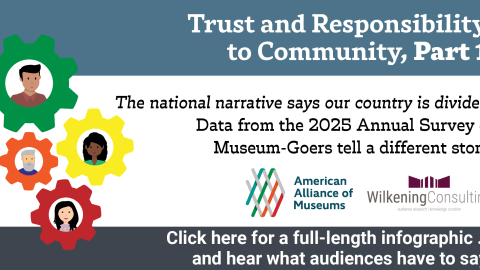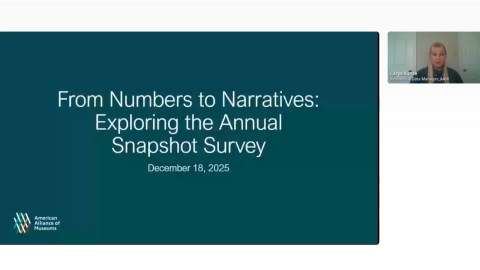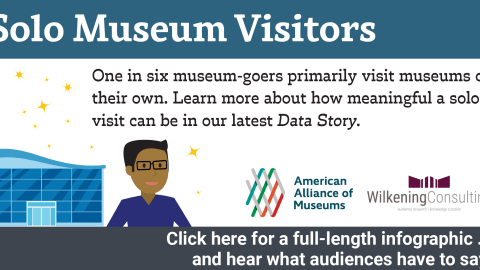In this Tuesday’s post on trust–who trusts museums, and why–I mentioned a post I wrote almost exactly two years ago that touched on that issue. Choosing Roles: Facilitator or Advocate?” explored two options, either of which I think most museums prefer to the role endorsed by the Britain Thinks research (just presenting the facts). In any case, I think it is a good post to re-read leading up to the Alliance meeting this spring.
(Adapted from original post published 2-16-2012)
Would you rather be loved, or would you rather save the world?
You can’t necessarily have both.
I pondered this choice, as it applies to museums, yesterday morning at the last half day of the 21st Century Learning in Natural History Settings conference at the National Museum of Natural History.
One of the documents being drafted as part of this project is a statement on the assets, public value, and potential of natural history institutions. In defining “what we are,” the document affirms, several times, “we are trusted.”
One thing that engenders trust is love, and it is true that many people love museums. Natural history museums in particular seem like prime candidates for universal love. Dinosaurs. Mummies. Cool dioramas. Birds, bugs, snakes (ok maybe these last two are not universally popular).
But it’s not all cute fuzzy animals. Natural history museums do more than reflect the documentary and observational practices of early natural historians. They are scientific institutions in a time when science seems to be increasingly devalued, especially when it comes to the ways in which science might inform national politics and policy.
The current 21cnhm draft values statement also affirms that natural history institutions can (or should) play a role in teaching about evolution and the human role in climate change (“altering the Earth’s natural processes”).
But there are a lot of people in the U.S. who aren’t going to trust museums on the issues of evolution and climate change. Less than forty percent of Americans believe in evolution while twenty-five percent don’t (the rest are agnostic, so to speak). Thirty-five percent believe that effects from global warming “will never happen” (18%) or “not in their lifetime” (16%). If natural history museums clearly and aggressively adopt an agenda of teaching evolution and the human role in climate change, the folks who don’t believe in these issues now probably aren’t going to trust natural history museums in general, either.
Which is fine, if museums are willing to write off that audience (most likely) or win them over (nice ambition, but less likely.)
But how does that reconcile with the reams that have been written on the need for museums to embrace diversity? One attendee yesterday thought the values statement should reference the need to “respectfully engage diverse communities,” another attendee felt museums should reflect “a plurality of voices.” Does that include political diversity and the voices of religious fundamentalists, even when they are at odds with mainstream views of scientists?
Many museum aspire to be “places of dialog,” creating “safe spaces” where people with different perspectives can come together for civil (and civic) conversation. And now museums are being told that, in the 21st century, they may need to adapt to the trend of distributed authority, becoming moderators and facilitators of learning and discovery for their audiences rather than the sole expert.
But one of the hard things about being a good facilitator is that you don’t get to inject your opinion into the discussion. Honest brokers don’t have agendas.
So this morning’s conversation made me think about the choice we face about the role our museums will play in society. Do we want to present opportunities for learning, trusting our audiences to draw their own conclusions, hoping that this in turn creates trust in museums as honest and neutral brokers of information? Or, do we want to set forth an agenda that may save the world and, in the process, be willing to say “you, you’re not only wrong, you’re endangering the future of the human race.”
And who gets to make that choice—to decide what values guide an individual museum, or the field?
Several years ago I had a memorable dinner with close museum friends, which turned tense when one of us, the director of a science museum in the Midwest, revealed she had nixed a travelling exhibit on evolution because it would incite controversy and damage her ability to operate in the political and funding communities in that city. She was pragmatic—but she also felt the museum had a responsibility to reflect community values, and this exhibit would not. Her colleagues were horrified—they felt a science museum should reflect the values of scientists, no matter who that offends.
A large majority of staff in natural history museums might eagerly take on the role of defender of science, and go to battle on behalf of teaching evolution and convincing the American public of humanity’s role in climate change. And some directors might, too. Others, like my friend, might ponder the realities of public funding and support in a US where a large percentage of the public don’t share these values. Pragmatic concerns aside, some might feel it is more important for museums to be neutral (and trusted) places for self-directed discovery than to advance a particular agenda.
This is a very difficult conversation. The choice—facilitator or advocate—is one that has to be made at the level of the individual institution and (if we are trying to create unifying statements about who we are) for the field as a whole. I’ll be interested to see how this tension plays out in the statements drafted through 21cnhm.
n.b.–as of February, 2015, videos and documents from this conference are still available on the project wiki.








